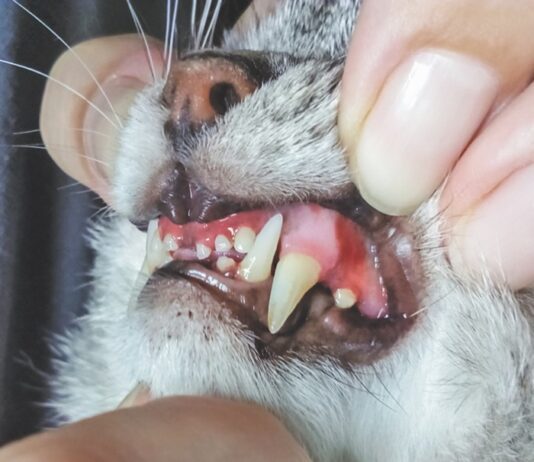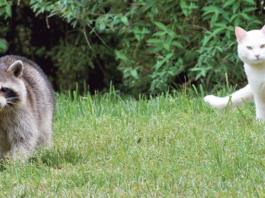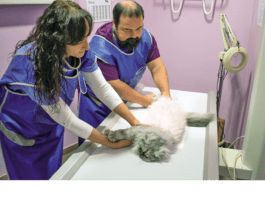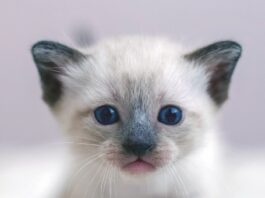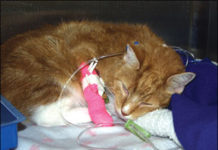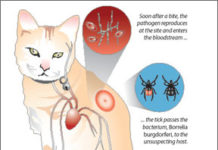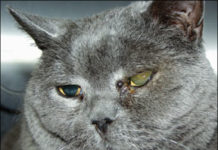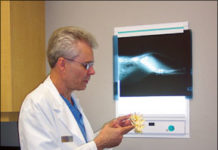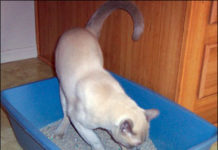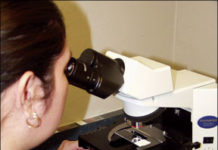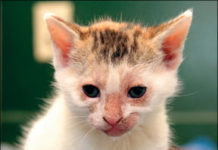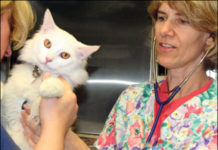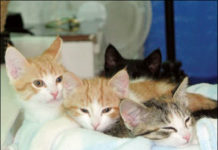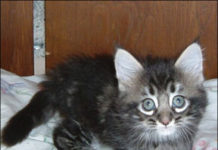Feline Kidneys: Vulnerable
Your cats kidneys, two relatively small organs located behind its rib cage - one on each side of its spine - play a central role in almost all of its bodily processes. They help to control the blood pressure and regulate the amount and chemical consistency of fluid in the bloodstream. They produce a variety of vitally needed hormones and enzymes, and they contribute to the production of red blood cells.
Lyme Disease: A Warm-Weather Threat to Your Cat
Fever, lethargy, loss of appetite and evidence of painful stiffness in the muscles and joints are clinical signs of many ailments that can afflict your cat at any time of year. Some feline disorders, however, are more prevalent during warm weather, when higher temperatures stimulate the activity of disease-causing organisms and the parasites that can transmit them to your cat.
Diagnosis: Glaucoma
The eye is an amazing, delicate organ. Cells within the eye normally produce a clear fluid (aqueous humor) that serves to nourish and maintain the shape of the eye. When the balance between the production and the drainage of fluid is upset, glaucoma can result. Decreased drainage of fluid causes increased pressure (and pain) within the eye, often resulting in damage to the optic nerve and, consequently, loss of vision.
Osteosarcoma: A Lethal Threat
Thanks to advances in veterinary medicine, many of the cancers to which cats are susceptible are now controllable, sometimes curable, and even (in the case of mammary cancer, for example) potentially preventable. This does not always hold true, however, for osteosarcoma, a highly destructive feline bone cancer for which there is no known cure unless it is detected early.
Danger: Toxoplasmosis
Toxoplasmosis is a fairly common zoonosis (a disease that can be shared between humans and animals); 30 to 40 percent of adult humans, and roughly the same percentage of cats, have antibodies that indicate prior exposure to the organism that causes the disease. Nevertheless, its particulars are still unfamiliar to many people. The disease poses a threat primarily to fetuses and to immunosuppressed patients, but an understanding of the organisms life cycle, how transmission occurs and can be avoided, and the signs of infection can greatly reduce the risk of serious disease.
Ask Dr. Richards: 05/07
But the bacterium, Yersinia pestis, widely held to be the cause of the Black Death of antiquity is alive and well, causing roughly 1,000 to 2,000 human cases of plague every year, primarily in rural areas of developing countries. Requisites for the diseases persistence are the availability of rodent (or sometimes rabbit) "reservoirs" with the ability to reproduce to high numbers, the year-round feeding of appropriate flea "vectors" and the proper environmental conditions. In the United States, the majority of cases in reservoir rodents - usually rock squirrels, ground squirrels and prairie dogs - occurs in the Southwest, but infected animals may be seen anywhere west of the Rockies. During heavy outbreaks in these animals, cases have been detected as far east as Oklahoma, Kansas and Texas. Most human cases of plague in the U.S. arise from two areas: one in the region encompassing southern Colorado and northern New Mexico and Arizona, and the other encompassing western Nevada, California and southern Oregon.
Feline Heartworm Infection
As springtime arrives throughout the U.S., the steamy days and nights of summer cannot be far behind. This means, of course, a proliferation of mosquitoes. For you, this is an annoyance. For your cat, these bothersome little creatures can pose a major health problem. Among all of the various disorders that can endanger a cats physical well-being and perhaps threaten its life, few are more insidious than feline heartworm disease, a potentially life-threatening condition that occurs when a parasitic worm called Dirofilaria immitis gets into an animals system.
Understanding Ringworm
Feline dermatophytosis, commonly referred to as ringworm, is a fungal infection that is frequently observed in cats. The condition occurs worldwide, most commonly in warm, humid climates that are hospitable to the peculiar type of fungus that causes it. In the U.S., the disorder is especially problematic year-round in the deep South, says William Miller, VMD, a professor of dermatology at Cornell Universitys College of Veterinary Medicine, and its prevalence can rise markedly in cooler areas of the nation with the arrival of hot and muggy summer weather.
Why Is Your Neighbor’s Cat Always Sneezing?
Your seven-year-old cat is a generally healthy animal. Except for a fleeting bout of gastrointestinal upset a few years ago, shes never had a really serious sick-day in her life. But your neighbors cat always seems to be ill. Indeed, every three or four months she shows up on your doorstep wheezing, sneezing and coughing. Her eyes are red and watery, and she acts lethargic. These disturbing signs persist for a week or 10 days, but then she seems to be all right again - for a while.
What Is Campylobacter?
Perhaps the only thing sadder than the sight of a tiny kitten suffering from a bout of gut-wrenching diarrhea is the sight of three or four of them, piled on top of each other in a cramped cage, all in the throes of debilitating, possibly life-threatening intestinal damage. That, unfortunately, is what may occur in an unkempt animal shelter contaminated with a bacterium called Campylobacter jejuni.
Understanding Feline Tumors
Cats come in a wide variety of shapes and sizes, and the range of their behavioral characteristics is similarly broad. The same can be said about the array of tumors (neoplasms) that can develop within the feline body. Some are small, others are large; some naturally tend to pass the time quietly ensconced in one spot, while others are destined to roam; some are benign by nature, while others behave very badly indeed, causing no end of damage.
What to Expect as Your Cat Grows Older
You should be pleased to see your cat, at the age of seven, looking terrifically fit and behaving with the same mischievous vitality that she did when she was a kitten. Bear in mind, however, that the feline age of seven is equivalent to the age of 41 or so in a human, and your cat as trim and spirited as she is at present is bound to start showing the normal signs of aging before you know it.

